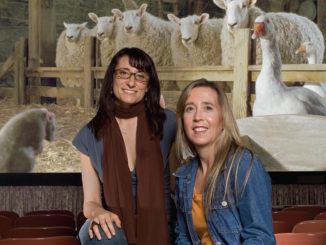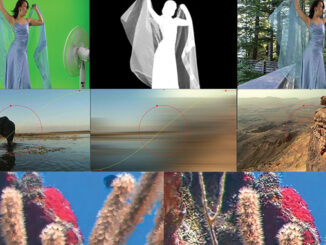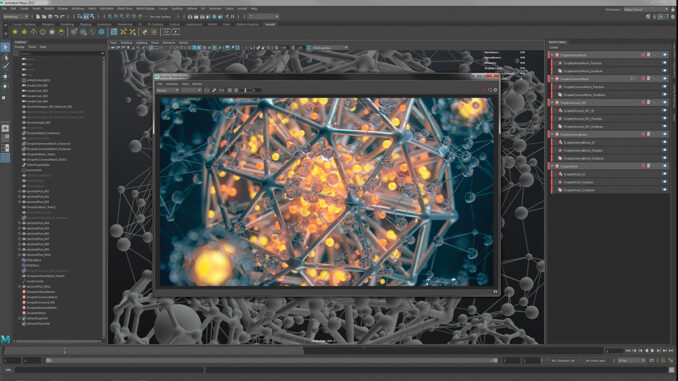
by Joseph Herman
To win a Scientific and Technical Award from the Academy of Motion Picture Arts and Sciences is no small feat. After all, these prestigious awards, which are given at a formal reception a couple of weeks before the principal Academy Awards ceremony, recognize original technical innovations and developments that result in significant improvements in motion picture production and exhibition.

In 2017, Madrid- and London-based Solid Angle was presented with this important Academy Award for Arnold, its industry-leading 3D rendering software for animation and visual effects (Note: Solid Angle’s award was for the higher-tier Scientific and Engineering Award, not the lesser Technical Achievement Award). That should give you some indication to the key role Arnold plays in the creation of complex, computer-generated imagery for feature films and TV. It’s been used to render images for all the films in the Alice in Wonderland, Thor, Captain America and The Avengers franchises, as well as Elysium, and HBO’s Game of Thrones. It was also used in the production of Gravity, which won seven Oscars, including Best Visual Effects.
While Solid Angle boasts a team of talented developers, Arnold is the brainchild of Marcos Fajardo. His early ray-tracing code was implemented into WYSIWYG (what you see is what you get) — a stage lighting design tool that earned an Engineering Emmy Award. Fajardo went on to create Arnold, entering into a partnership with Sony Pictures Imageworks to co-develop and adopt it as the company’s main renderer. In 2007, Sony-owned Columbia Pictures’ animated feature Monster House, rendered with Arnold, was nominated for an Academy Award. Since then, Arnold has become the preferred renderer for many leading visual effects and animation studios.

Arnold is a powerful, unbiased, physically based path tracer and global illumination production renderer based on Monte Carlo ray-tracing algorithms. Without getting into a technical discussion as to what all that means, the important thing to know is that Arnold can produce high-quality, photorealistic renders of 3D scenes that some consider to be the best in the business. How powerful is the software? Well, the product was named after Arnold Schwarzenegger. Whether or not that is an indication of just how powerful the software is, I will leave up to you.
Solid Angle Joins Autodesk
In 2016, Autodesk, a leading provider of 3D software, acquired Solid Angle and bundled Arnold with Maya 2017, its 3D modeling and animation package that is widely used in Hollywood. Arnold replaced Mental Ray, Maya’s previous built-in renderer, so that anyone who buys Maya can now use Arnold to render. This brings a huge influx of new users and even wider acceptance in the motion picture industry. While some may still prefer to render with another third-party rendering solution, why would you when you’ve got Arnold at your fingertips?
While the acquisition by Autodesk may open new vistas for Arnold, it was also a cause for concern to some users. There are other versions of Arnold besides Maya, such as MAXON’s popular CINEMA 4D, which enjoys a thriving community of enthusiastic users. Arnold also works with Houdini by SideFX Software. Does that mean that users of those programs will be cut off? According to Solid Angle, the answer is a resounding “No.” The company has promised that development will continue unabated on all platforms.
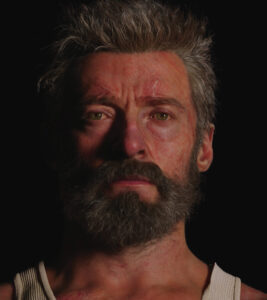
Image by Image Engine
CPU vs. GPU
According to Solid Angle, Arnold 5, recently released on April 12, is an evolution in rendering which not only contains new features but represents a significant transition to a new internal architecture, paving the way for “new developments to come.” One of these new developments is no doubt the upcoming GPU version of Arnold — something Marcos Fajardo officially spoke about during his talk at last year’s SIGGRAPH.
What’s GPU rendering you ask? The past few years have seen the emergence of rendering programs that use your GPU (graphics processing unit) to create final renders. Traditionally, GPUs are used during modeling and animation, but CPUs (central processing units) are used to render the final frames. However, thanks to developments like CUDA (compute unified device architecture), some developers found a way to speed up the final rendering process by using your graphics card to also generate the final high-quality images.
However, as Fajardo points out, GPU rendering, as promising as it may be, is not really a replacement for CPU rendering. Not yet anyway. To begin with, there are a wide range of CPUs and GPUs at different price points. How much of a speed increase you may get from the GPU version of Arnold, as opposed to the CPU version, is based on your hardware. If you have a cheap CPU and an expensive GPU, you will see a major boost in speed. However, if you have a cheap GPU and an expensive CPU, the results will be disappointing — if there is any speed-up at all.
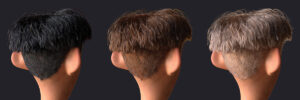
Model courtesy of Zeno Pelgrims
Aside from these price point comparisons, however, there are even more important limitations to GPU rendering. While independent artists working on small to mid-range projects will benefit from GPU rendering, others — namely those who work on large-scale projects — will want to continue rendering on CPUs.
As Fajardo says, the reason CPU renderers are the right choice for big visual effects and animation companies today is because CPUs have access to much more memory than GPUs. This is important in massive visual effects scenes, like those in Gravity (2013), where the volume of 3D data is very large with very intricate models, high-resolution textures, volumetric simulations and displacement maps. Due to the much smaller memory capacities of GPUs, these kinds of scenes require rendering with CPUs that have access to copious amounts of RAM. Thus, it is Intel CPUs that power rendering for Hollywood, and this will remain so for the foreseeable future.
The exciting development for studios doing massive productions is not so much GPU rendering but the advent of cloud rendering. Sending large scenes to render on cloud services containing vast numbers of CPUs greatly increases the power of small to medium facilities, allowing them to compete with bigger studios without spending a fortune on building and maintaining on-site infrastructure, machine rooms and render farms.
However, GPU rendering is an exciting new technology that will continue to become more important, and Solid Angle is hard at work at GPU support in Arnold (Word on the street is that Solid Angle decided to concentrate on new features and improvements in Arnold 5 before making a GPU version).
So, What’s New, Arnold?
Let’s discuss the new features in Arnold 5. To start, the internal API (application program interface) has been reworked, extended and simplified, making it much easier for those who want to write Arnold-powered applications.
Arnold 5 is also faster. Many functions have been optimized, resulting in significant speed increases in ray tracing and rendering. Large OpenVDB volume caches (used to create volumetric effects for such things as clouds, smoke and explosions) are twice as fast as are indoor scenes with multiple GI bounces (indirect lighting) and objects with high transmission depth, like realistic-looking glass. Opacity-mapped surfaces, such as tree leaves, render up to 20 percent faster, and there are many other examples of smoother and faster rendering.
A ray tracer like Arnold works by tracing the path of many rays from a 3D camera through the entire scene. If the sample rate is not high enough, noise and grain can appear. Removing it is done by increasing the sample rate (which also has the result of increasing the render time). Arnold 5 includes several sampling optimizations. There’s a new technique for dithered sampling, which improves the visual distribution of noise at lower sample rates and improves sampling results with soft shadows, making your renders look smoother with less noise.
Lighting has also been improved. A new approach has been taken for direct illumination sampling for quad, disk and cylinder lights that reduces noise in both surface and volumetric lighting. You’ll see better results in less time.

Image from Hybride
Keeping it Simple
3D rendering can be inherently complex. After all, you’re doing no less than simulating the way light behaves in the physical world. However, a good artistic tool should be simple and intuitive. If things get too technical or bewildering, creativity can suffer and precious time and energy is wasted. Good software maintains a balance between complexity and intuition.
A main objective of Arnold 5 was ease of use. Clumsy or redundant workflows were simplified (for example, mirror and glossy reflections have been combined into a single “specular” ray type), and installation and deployment are easier, particularly in the cloud. Arnold 5 also includes an extensive set of built-in shaders that minimize the need for third-party libraries. Arnold 5 also comes with a built-in OpenVDB 4 library, again simplifying deployment.
An effective lighting technique that 3D artists often employ is Image Based Lighting (IBL), which works by surrounding your scene with a 360-degree 32-bit, HDRI environmental image and extracting the lighting information from it. It also has the benefit of creating realistic reflections on your models. In Arnold 5, IBL is easier and includes built-in visibility flags in the skydome light.
New and Improved Shaders
Arnold’s improved Standard Surface shader is a very useful, physically based, all-in-one shader that is capable of producing many types of materials and surfaces — whether you are creating iron, vinyl or stone. It includes layers for diffuse color, specular with complex Fresnel for metals, rough specular transmission for glass, subsurface scattering for skin, single scattering for water and ice, a secondary specular coat, and light emission. It also takes advantage of new GI sampling techniques for faster rendering.
The new Standard Hair shader is designed to realistically render hair and fur by setting a few simple parameters for the base color, as well as roughness and index of refraction. In addition, realistic colors for human hair can be achieved with controls for two types of melanin. Hair-to-hair multiple scattering is also supported. There are also more than 80 optimized utility shaders built into the Arnold core rendering library.
Conclusion
Arnold is a world-class production renderer that has been updated and optimized in version 5. Things will get even more exciting for individuals and smaller projects when a GPU version is released. However, large facilities will continue to rely on the brute force and large memory capabilities of the CPU version.
Either way, if you create images for film and television on projects big and small, Arnold plays a key role in realizing your wildest creative visions.


